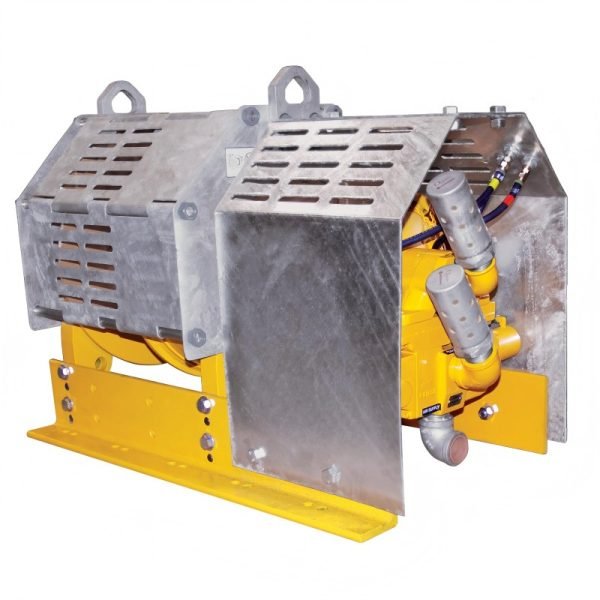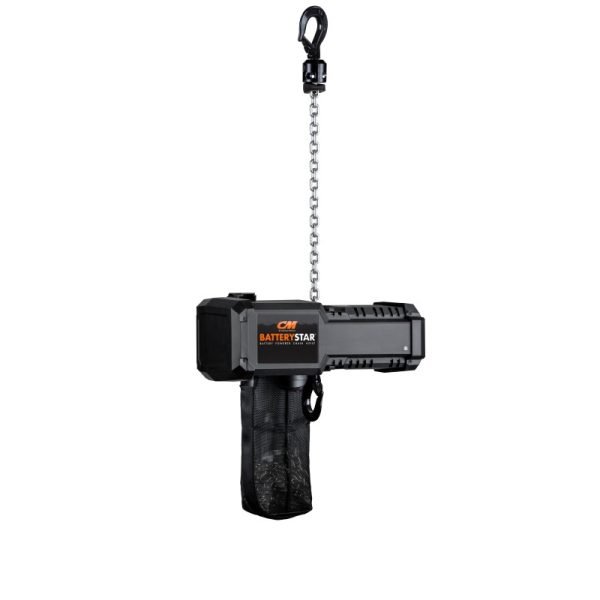
Lors de la sélection de l'équipement approprié pour soulever, tirer ou positionner des charges, les termes « treuil » et « palan » sont souvent utilisés de manière interchangeable. Cependant, il est essentiel de comprendre les différences fondamentales entre ces deux appareils pour choisir l'outil approprié à votre application spécifique. Dans ce guide détaillé, nous explorons les distinctions entre les treuils et les palans, leurs caractéristiques uniques et comment déterminer celui qui convient le mieux à vos besoins opérationnels.
Qu'est-ce qu'un treuil ?
Un treuil est un appareil utilisé principalement pour tirer ou traîner des charges horizontalement sur une surface. Il se compose d'un tambour qui enroule un câble, une corde ou une chaîne, entraîné par un moteur ou une manivelle manuelle. Les treuils sont couramment utilisés dans divers secteurs, notamment la construction, la marine et l'automobile, pour des tâches telles que la récupération de véhicules, le remorquage et le positionnement de matériaux lourds.
Caractéristiques principales des treuils :
- Traction horizontale : Les treuils sont conçus pour exercer une force horizontalement, ce qui les rend idéaux pour traîner ou tirer des charges le long d'une surface.
- Plusieurs sources d'alimentation : Les treuils peuvent être alimentés par l'électricité, l'hydraulique, le pneumatique ou manuellement, offrant une polyvalence pour différentes applications.
- Contrôle de vitesse variable : De nombreux treuils offrent des réglages de vitesse variables, permettant un contrôle précis de l'opération de traction.
Qu'est-ce qu'un palan ?
Un palan, en revanche, est spécialement conçu pour soulever et abaisser des charges verticalement. Il est équipé d'un tambour ou d'une roue qui enroule un câble ou une chaîne, soulevant ou abaissant la charge. Les palans sont couramment utilisés dans les environnements industriels, tels que les entrepôts, les usines et les chantiers de construction, pour soulever des matériaux lourds à différentes hauteurs.
Caractéristiques principales des palans :
- Levage vertical : Les palans sont conçus pour soulever des charges de haut en bas, ce qui les rend idéaux pour les applications où une élévation est requise.
- Conception spécifique à la charge : Les palans sont souvent équipés de dispositifs de sécurité tels que des freins et une protection contre les surcharges, garantissant le levage en toute sécurité d'objets lourds.
- Options motorisées et manuelles : Les palans peuvent être alimentés par des moteurs électriques, hydrauliques ou pneumatiques, ainsi que par des mécanismes manuels pour les charges plus légères.
Différences entre les treuils et les palans
Bien que les treuils et les palans puissent sembler similaires, leurs différences résident dans leur utilisation prévue, leur conception et leurs capacités opérationnelles. Il est essentiel de comprendre ces différences pour sélectionner l'équipement adapté à vos besoins.
1. Objectif et champ d'application
- Treuil: Principalement utilisé pour tirer ou traîner des charges horizontalement. Convient aux applications telles que la récupération de véhicules, le remorquage et le positionnement d'équipements lourds.
- Hisser: Conçu spécifiquement pour le levage et l'abaissement de charges verticalement. Couramment utilisé dans les industries qui nécessitent que des matériaux lourds soient élevés à différentes hauteurs.
2. Direction de la force
- Treuil: Exerce une force dans une direction horizontale, ce qui le rend idéal pour tirer des charges le long d'une surface plane ou inclinée.
- Hisser: Exerce une force verticalement, soulevant des charges vers le haut ou vers le bas.
3. Puissance et capacité
- Treuil: Généralement disponibles dans une large gamme de sources d'énergie, notamment électriques, hydrauliques et manuelles. Les treuils peuvent supporter différentes capacités de charge, mais ils ne sont généralement pas conçus pour soulever de lourdes charges verticalement.
- Hisser: Conçus pour le levage vertical, les palans sont construits pour supporter des charges plus lourdes, souvent équipés de moteurs puissants et de mécanismes de sécurité pour assurer la stabilité pendant les opérations de levage.
4. Mécanismes de sécurité
- Treuil: Bien que les treuils puissent être dotés de dispositifs de sécurité de base tels que des freins, ils ne sont généralement pas équipés des mécanismes de sécurité complets que l'on retrouve dans les palans. En effet, les treuils ne sont pas conçus pour soulever des charges verticalement, où la sécurité est plus critique.
- Hisser: Les palans sont dotés de fonctions de sécurité avancées, notamment des freins, une protection contre les surcharges et des fonctions d'arrêt d'urgence, ce qui les rend plus sûrs pour soulever des charges lourdes.
Quand utiliser un treuil
Un treuil est l'outil idéal pour tirer ou traîner une charge horizontalement. Les scénarios courants dans lesquels un treuil est idéal incluent :
- Récupération de véhicule : Retirer un véhicule coincé dans la boue, le sable ou la neige.
- Remorquage: Traîner des objets lourds, tels que des bateaux ou des remorques, sur une surface plane.
- Positionnement du matériel : Déplacer des matériaux ou équipements lourds en position sur un chantier ou dans un atelier.
Quand utiliser un palan
Un palan est l'outil privilégié pour soulever et abaisser des charges verticalement. Les situations dans lesquelles un palan est essentiel incluent
- Opérations d'entrepôt : Levage de palettes ou de cartons lourds vers différents niveaux de stockage.
- Chantiers de construction : Élévation de matériaux tels que des poutres en acier, des blocs de béton ou d’autres composants de construction lourds.
- Fabrication: Déplacement de machines ou de composants lourds dans une usine.
Diagramme : Différences fonctionnelles entre un treuil et un palan

Comment KRC peut vous aider
Maintenant que la distinction entre un treuil et un palan est claire, vous pourriez être impatient d'en acquérir un pour votre entreprise. Chez KRC, nous sommes extrêmement fiers d'offrir des produits de première qualité. treuils et palans, adaptés à une multitude d'industries et d'applications. Du début à la fin, notre équipe est prête à fournir un soutien inégalé, garantissant que vos exigences uniques sont satisfaites avec précision. Comme l'explique CarolDuan, notre ingénieure d'application principale : « Notre première étape consiste à discerner la nature du lieu de notre client. S'agit-il d'un lieu de divertissement ou industriel ? Si le scénario implique de soulever des personnes au-dessus de la tête, nous faisons appel à notre équipe spécialisée dans le théâtre pour une évaluation et une assistance approfondies. » Contactez-nous aujourd'hui pour vous lancer dans votre voyage !





